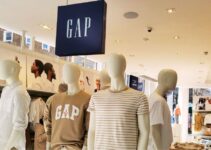Zara is the world’s leading retail fashion brand that offers stylish fashion apparel and fast fashion at affordable prices. The fashion line of Zara targets a wide range of people of all ages from different cultures and backgrounds. It has allowed the fashion brand to amplify its market share and sales over the years. Today, we’ll discuss the marketing strategy of Zara; the marketing campaigns of Zara, and the market segmentation of Zara.
Marketing Campaigns of Zara
Zara has established a reputation for launching various creative and innovative marketing campaigns over the years. It allowed the company to achieve and maintain a strong branding position in the fashion industry. Some of the top marketing campaigns of Zara are as follows;
Dear America
Zara introduced the “Dear America” marketing campaign relating to the “Black Lives Matter” movement in 2020. The fashion brand issued a letter from the company’s management offering its support and commitment to the BLM movement and including diversity in its workplace environment. However, it became a highly successful campaign in connecting and engaging customers and endorsing social responsibility.
Forces of Nature
Zara launched the “Force of Nature” campaign in 2019 focusing on the manufacturing of apparel from the sustainable material. The objective of the campaign was to spread awareness about the significance of environmental awareness in the fashion industry. It also highlighted the role and commitment of Zara towards environmental sustainability.
The City
Zara introduced “The City” campaign in 2018 where models walked in various big cities across the globe. It highlighted the fashion apparel of the brand in a stunningly unique way. However, The City campaign became highly successful in establishing emotional connections with customers and amplified the global reach of the fashion brand.
Market Segmentation of Zara
In order to recognize the target customer market, Zara employs market segmentation to divide the customer market based on their preferences, needs, demands, and characteristics.
Demographic Segmentation of Zara
Zara implements demographic segmentation to divide and segment its target customer market into various groups based on shared common traits and characteristics. The fashion brand crafts a specific marketing message and develops a special product to satisfy the unique needs and wishes of the target group of customers. For instance, Zara has segmented its women’s customer market into the following categories;
- Middle-aged mothers
- Working professional women
- Teenagers and college students
Psychographic Segmentation of Zara
Zara targets trend-oriented and fashion-conscious customers who want modern fashion clothes and apparel. The company targets those individuals who are conscious of the latest fashion trends and admire the latest and creative designs and styles.
Geographic Segmentation of Zara
Zara fully exploits geographic segmentation and launch different marketing campaigns in various economic conditions, cultural norms, climate, and tastes. For instance, the fashion brand improves its product lineup and develops heavier layers and warm fabric for cold weather areas; including local and regional styles and preferences relevant to the specific area. Zara coordinates with public figures, celebrities, and local influencers to generate about the specific product or trends among the target customers.
Behavioral Segmentation of Zara
Zara implements behavioral segmentation to comprehend how the target customers connect with the fashion brand and make the buying decision. The fashion brand analyzes customers’ data and various indicators like social media engagements, browsing history, and customer shopping history. However, it provides a key insight into the shopping patterns of customers. The company launched a strategic promotional campaign to establish long-term relationships with customers and make them do repetitive business with the company.
Marketing Strategy of Zara
Zara is a renowned retail fashion brand in the affordable fashion category. The company has established a strong database of loyal customers by implementing various marketing strategies. The marketing strategy of Zara is as follows;
Engagement & Community Building
The community-building strategy of Zara focuses on partnering up and collaborating with charities, local organizations, and NGOs and investing it back in the community. This strategic approach helps the company to establish a positive reputation and develop an emotional connection with customers. It has allowed the company to build a memorable and unique brand identity that would resonate and connect with customers at a personal level.
Environmental Sustainability
The environmentally sustainable approach of Zara comprises taking various sustainable initiatives like; employing sustainable materials and decreasing waste during production and manufacturing processes. This strategic approach helps the company to attract environmentally conscious and eco-friendly customers who are sensitive to ethical approaches.
Personalization
The personalization strategy of Zara focuses on employing customer data and shopping patterns to offer a personalized shopping experience to the customers. The fashion brand employs data like buying history and customer preferences to launch a personalized marketing campaign and recommend similar products.
Collaboration with Influencer
As the name implies, Zara partners with public figures, celebrities, and social media influencers for the promotion of certain products, trends, and brands on social media. This strategic approach helps the company to approach the mass audience and tap into the new areas of the market. However, the fashion brand also hires them as brand ambassadors, and they always speak on the company’s behalf and promote its products.
In-store Experience
The in-store strategy of Zara focuses on providing a memorable and unique shopping experience to the customers. The brand designs the interior of the store in a way that is visually appealing to the customers and easy to navigate and explore by highlighting the collection of new product items.
Social Media Marketing
The social media strategy of Zara comprises connecting and engaging with customers on social media platforms and convincing them to try out the latest fashion trends. The social media strategy of the company has allowed the company to approach the mass audience and connect with them at a personal level. However, the fashion brand has a vast network on social media channels;
- 59 million followers on Instagram
- 30 million followers on Facebook
- 1.3 million Followers on Twitter
- 30K likes on every post
Limited Offer
In order to make customers make quick buying decisions, Zara launches various types of limited-time and exclusive offers. It could be in the form of sale events, discounts, and low prices; and they require customers to make impulsive decisions because the offer won’t be available tomorrow. The fashion brand also launches various seasonal promotions like the following;
- New Year’s Day
- Christmas
- Cyber Monday
- Black Friday
Fast Fashion
Fast fashion plays a key role in the growth and success of the company. It means that the company quickly produces and launches (roundabout within 2 weeks) fashion products relevant to the changing interests and preferences of the customers. However, Zara exploits the latest emerging trends and gains a competitive edge in the market.
Conclusion: Zara Marketing Strategy
After an in-depth study of the marketing strategy of Zara market segmentation strategy; we have realized that Zara is the world’s leading fashion brand. If you are learning about the market segmentation strategy of Zara marketing strategy; then you should keep in mind the abovementioned elements.

Ahsan is an accomplished researcher and has a deep insight in worldly life affairs. He goes Live 3 days a week on various social media platforms. Other than research writing, he’s a very interesting person.


